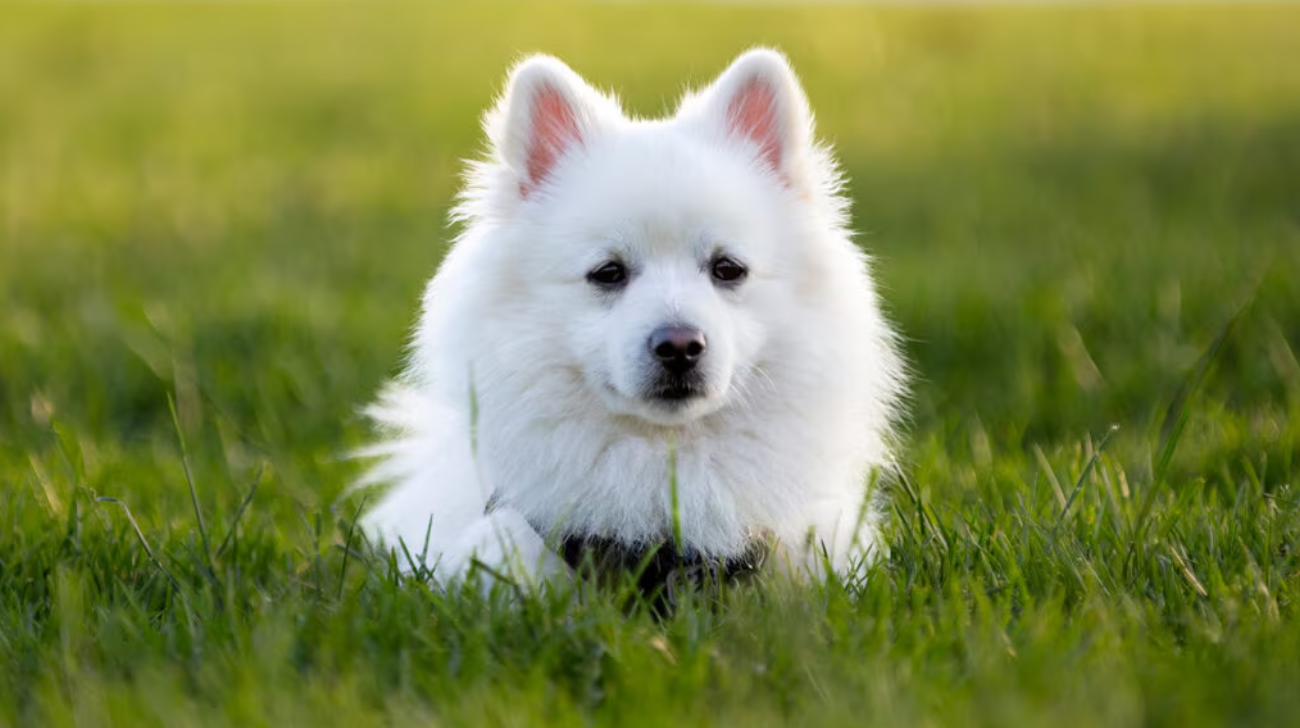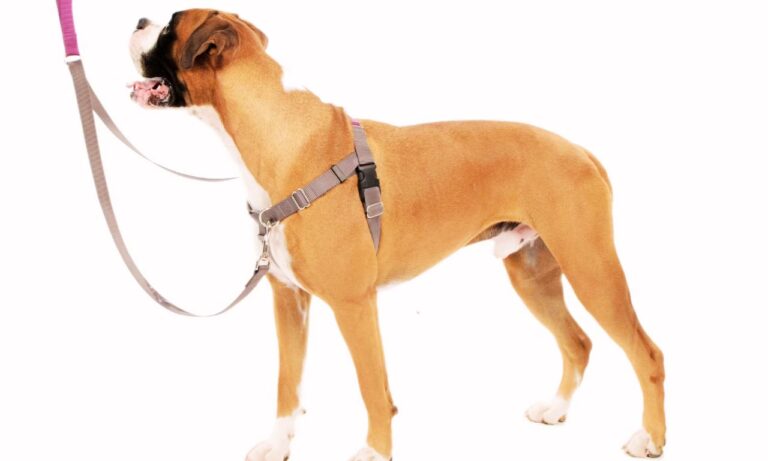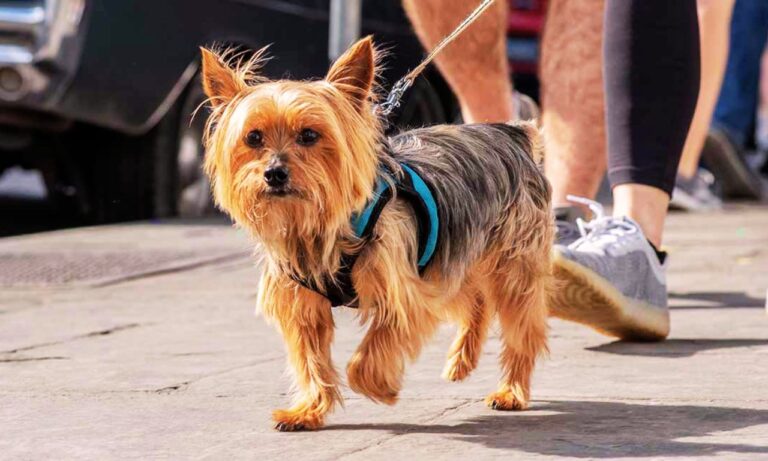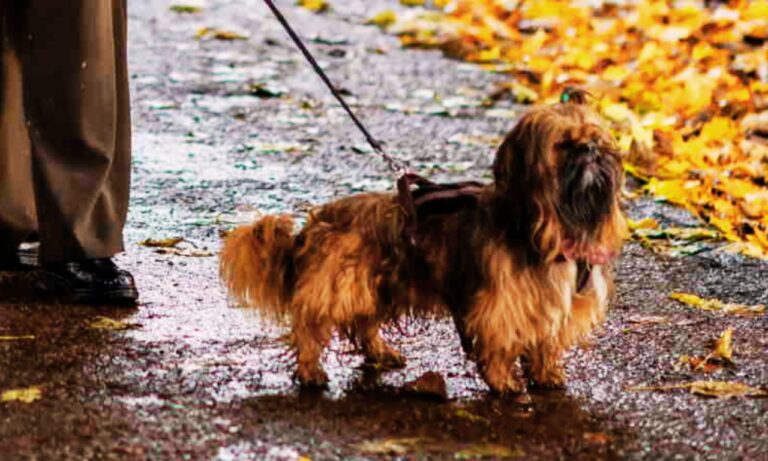The American Eskimo Dog, affectionately known as the “Eskie,” is a fluffy, intelligent, and loyal breed that many people consider for home security. However, the question arises: can this cute, medium-sized companion actually serve as a guard dog? So, Is American Eskimo a guard dog?
I’ll explore the characteristics, strengths, and guarding capabilities of American Eskimo Dogs to determine if they are suitable for guarding roles. I will also touch on their history, temperament, and how they can be trained for security. Learn if Dachshunds need special collars to provide the right support and comfort for their unique body shape.
Blog Highlights
ToggleOverview of the American Eskimo Dog
American Eskimo Dogs belong to the Spitz family and are characterized by their beautiful white double coat, expressive eyes, and perky ears. The breed comes in three sizes: toy, miniature, and standard, ranging from 9-19 inches in height and 6-35 pounds in weight, depending on the size type.

Originally called the German Spitz, this breed was later renamed the American Spitz and eventually the American Eskimo Dog after World War I, reflecting the patriotism of the era.
Although Eskies have a distinct fluffy coat that might resemble the larger Samoyeds, they differ significantly in both temperament and function.
They are known for their agility, loyalty, and striking beauty—traits that have made them popular circus performers in the past. Their intelligence and ability to learn tricks quickly only added to their appeal as entertainers. Discover what size collar is best for a French Bulldog puppy to ensure both safety and comfort during their growing stages.
Is American Eskimo a Guard Dog?
So, Is American Eskimo a guard dog? The American Eskimo Dog is more of a watchdog than a guard dog. It is vigilant, alert, and will bark to warn owners of potential threats. However, due to its small size and friendly nature, it lacks the physical intimidation needed for a true guard dog role.

American Eskimo Dogs as Guard Dogs: Strengths and Weaknesses
American Eskimo Dogs are often mistaken for classic guard dogs. While they may not fit the image of large, imposing breeds like Rottweilers or German Shepherds, Eskies do have some natural characteristics that lend themselves well to watchdog duties.
1. Natural Alertness and Protective Instincts
American Eskimo Dogs are inherently alert and attentive. Their keen senses allow them to notice changes in their environment, making them excellent watchdogs. Their natural wariness of strangers means they are likely to bark loudly if they perceive anything unusual around the house.
This bark is often enough to serve as a deterrent to potential intruders, and their loud vocalization is one of their greatest assets as a guard dog. While American Eskimo Dogs do not have an aggressive temperament, their territorial nature—rooted in their history as guard dogs for farms in Germany—makes them vigilant and protective.
Their loyalty to their family members drives them to defend their loved ones if they perceive a threat. Their strong bond with their owners further enhances their protective behavior, making them great watchdogs for alerting families to possible intrusions. Understand if French Bulldogs can wear dog collars and how it affects their neck structure and overall health.
2. Size and Physical Capabilities
American Eskimo Dogs come in three sizes, with the standard version being the largest at 15-19 inches tall and weighing between 25-35 pounds. Despite their relatively small size compared to other guard dog breeds, Eskies are strong and agile. Their well-muscled body allows them to move swiftly, which may help them deter intruders by being quick and alert.
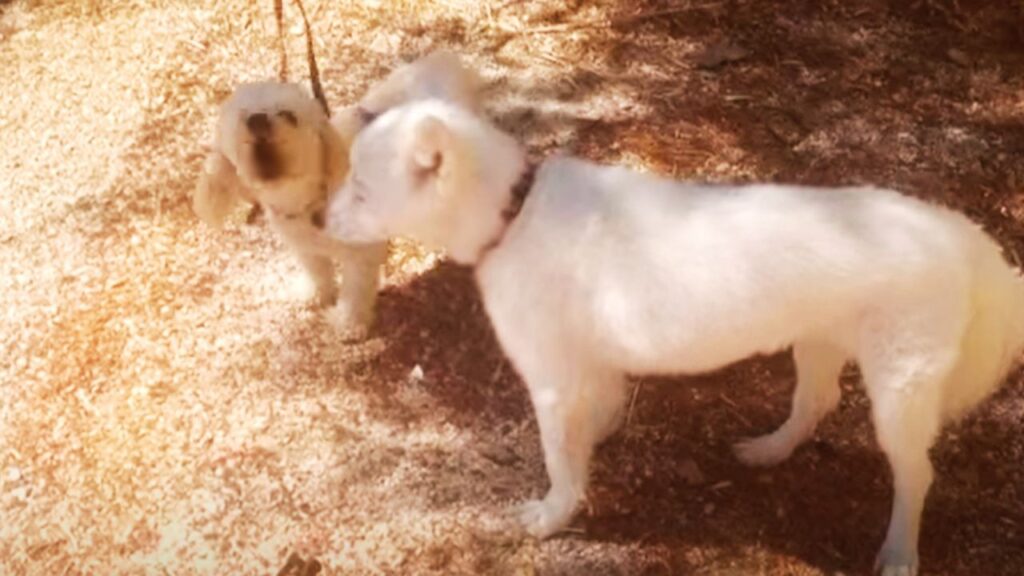
However, their size is both a strength and a weakness. While their agility makes them capable of swift movements and quick reactions, their smaller stature means that they lack the physical intimidation factor of larger guard breeds. They might not be able to physically overpower an intruder, which limits their role in providing physical defense.
Temperament and Personality: How It Affects Guarding Abilities
American Eskimo Dogs are affectionate, playful, and intelligent. They form strong bonds with their families and are known for their loyalty. However, these same qualities also mean they are often gentle and friendly, which might not be ideal in a guard dog that needs to be imposing.
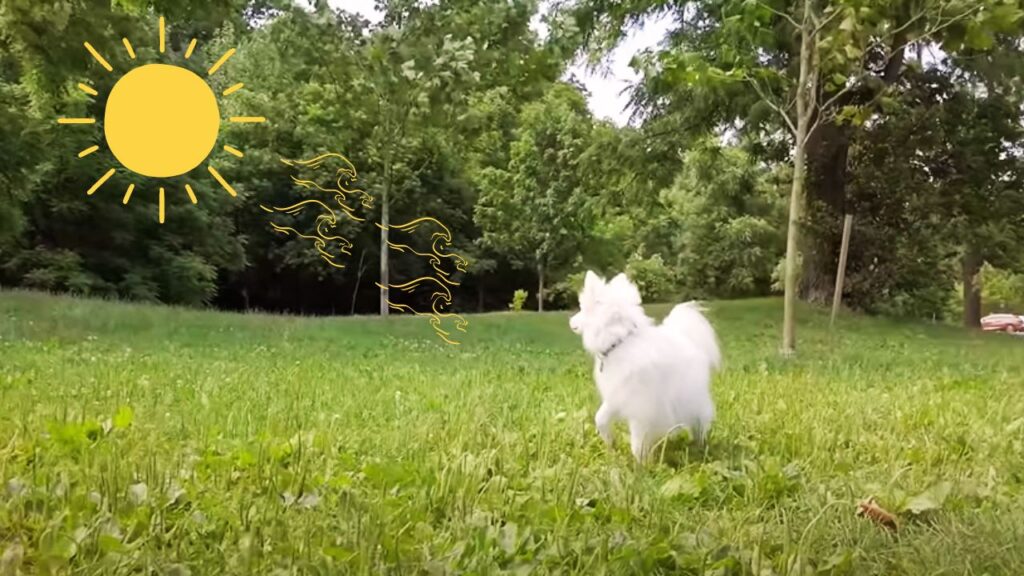
1. Intelligence and Trainability
One of the key strengths of American Eskimo Dogs is their intelligence. They are highly trainable and eager to please their owners. With proper obedience training, an Eskie can learn specific commands related to guarding, such as “bark,” “quiet,” or “stay.”
Their ability to learn and execute commands makes them reliable watchdogs, but it’s essential to note that their training should be consistent and start from an early age.
Socialization is also crucial for Eskies. Given their wariness of strangers, proper exposure to different people, animals, and environments will help them develop the discernment needed to differentiate between friends and potential threats. Training that emphasizes positive reinforcement is most effective, as harsh training methods can result in fear-based behavior.
2. Affectionate Nature and Family Compatibility
Eskies are affectionate and sociable, making them excellent family pets. They are good with children, although their high energy levels can sometimes be overwhelming for younger kids. While their affection and friendliness might not make them intimidating guard dogs, they are incredibly loyal and will not hesitate to alert their owners to perceived dangers.
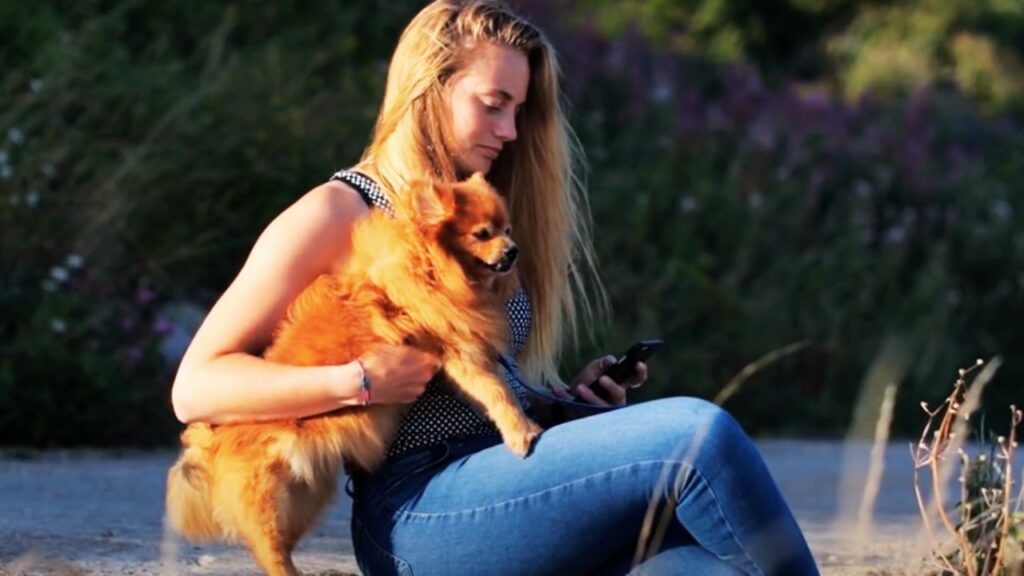
Their protective instincts are apparent in their willingness to bark at unfamiliar sounds or strangers approaching their home. However, this same vocalization can become excessive if not properly managed. Barking is an important part of their guarding abilities, but owners must be mindful of training them to bark only when necessary to prevent it from becoming a nuisance.
Explore the best dog collars for French Bulldogs to keep them comfortable while ensuring durability and style.
Common Misconceptions About American Eskimo Dogs as Guard Dogs
Many people assume that American Eskimo Dogs, because of their small size and cute appearance, are not effective guard dogs. While it is true that they may not be able to physically confront an intruder like a larger breed, their primary role is that of a watchdog rather than a full guard dog.
They excel at being an early warning system, using their sharp senses to detect changes and alerting their owners through vocalization. American Eskimo Dogs are not inherently aggressive, which makes them unsuitable for roles requiring physical confrontation.
However, their vigilance and territorial nature make them highly capable of alerting their owners to potential threats. With early socialization and training, Eskies can be taught to be discerning about when to bark, preventing unnecessary alarm and ensuring they respond appropriately to different situations.
Training an American Eskimo Dog as a Watchdog
American Eskimo Dogs are known for their intelligence and eagerness to please, making them highly trainable. The key to training an Eskie is using positive reinforcement techniques.
Harsh or punitive methods are counterproductive with this sensitive breed, and they respond best to rewards such as treats, praise, and play. Commands like “bark” and “quiet” are particularly important for a watchdog, and consistent practice helps reinforce these behaviors effectively.
1. Importance of Socialization
Socialization is a crucial aspect of raising an American Eskimo Dog to be an effective watchdog. Eskies are naturally wary of strangers, and without proper socialization, this can lead to excessive barking or anxiety. Find the best dog collars for Dachshunds that accommodate their long bodies and prevent strain on their necks.
Introducing your Eskie to a variety of people, pets, and environments from a young age helps them differentiate between a real threat and a benign situation. This not only helps control unnecessary barking but also ensures they remain well-adjusted and confident in various settings.
2. Mental and Physical Stimulation
American Eskimo Dogs are highly energetic and require both physical and mental stimulation to stay balanced and well-behaved. Regular walks, playtime, and interactive toys help them expend energy, reducing the likelihood of unwanted behaviors like excessive barking or destructiveness.
In addition to physical exercise, obedience training and puzzle toys are great ways to challenge their sharp minds. Training sessions that blend mental exercises with commands related to guarding will keep an Eskie engaged and enhance their ability to serve as a vigilant watchdog.
3. Training Considerations for Guarding
To help an American Eskimo Dog become an effective watchdog, several key training considerations should be taken into account:
- Socialization: From a young age, American Eskimo Dogs should be exposed to various people, animals, and environments. This helps them distinguish between normal, friendly situations and potential threats.
- Positive Reinforcement: Eskies are sensitive dogs that respond best to training techniques involving rewards and praise. Harsh or punitive training methods can be counterproductive, leading to fear-based responses rather than effective guarding behavior.
- Obedience Training: Commands like “stay,” “bark,” and “quiet” are essential for a well-trained watchdog. American Eskimo Dogs are intelligent and, with consistent training, can become obedient and responsive to commands related to guarding.
- Mental and Physical Stimulation: As active dogs, Eskies need plenty of physical and mental exercise. Without enough activity, they may become bored, which could lead to excessive barking or destructive behavior. An hour of exercise daily, combined with interactive toys and brain games, can help keep them engaged and well-balanced.
Conclusion: Is an American Eskimo Dog the Right Guard Dog for You?
American Eskimo Dogs are not traditional guard dogs, but they can serve as highly effective watchdogs for alerting families to potential dangers. Their intelligence, loyalty, and alertness make them suitable for this role, especially in homes that need an early warning system rather than a physically imposing protector.
Eskies will sound the alarm loudly and clearly if they sense an intruder, which can be a significant deterrent. Hope so, now you know the answer: Is American Eskimo a guard dog? Get insights into what is best for Dachshunds: a collar or harness for their safety, comfort, and health during walks.
However, their small size and friendly disposition mean they lack the physical presence and aggression of more traditional guard breeds. If you are looking for a dog that can physically confront an intruder, an American Eskimo Dog might not be the best fit. But if you want a loyal, protective companion who will remain vigilant and alert you to any unusual activity, the Eskie is an excellent choice.

